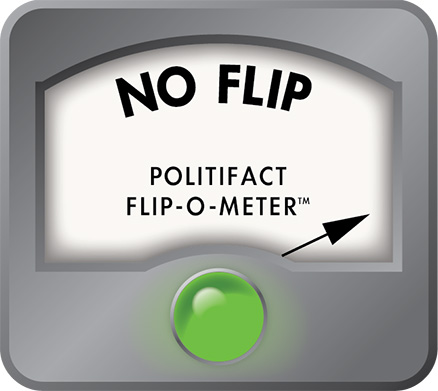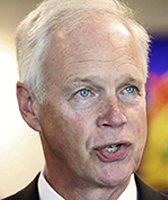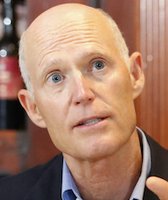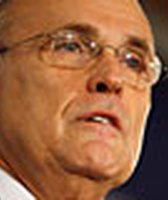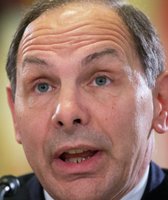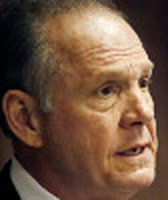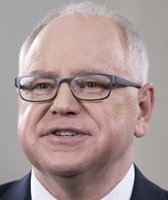Get PolitiFact in your inbox.
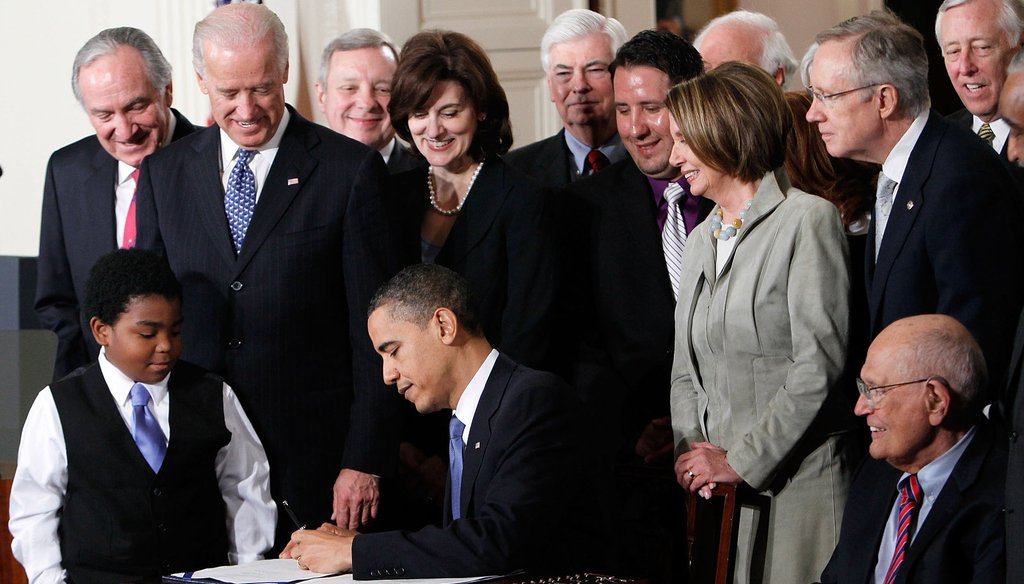
President Barack Obama signs the Affordable Health Care for America Act during a ceremony with fellow Democrats in the East Room of the White House on March 23, 2010, in Washington, D.C.
Predictions about the health care law were a dime a dozen back in 2010. Supporters contended that virtually everyone around the country would soon have access to affordable insurance. Opponents said the law would cost a fortune by adding to the national debt and killing jobs.
Actually, none of those things have happened.
As the Affordable Care Act makes its way to its fifth anniversary on Monday, the law has taken twists and turns, moving off course from where everyone thought it would be.
Once expected to insure 32 million new Americans by the end of the decade, the projected target has been downgraded to 27 million — far from the universal coverage many proponents hoped for.
Unforeseen developments, like significant changes in health cost trends and a sweeping Supreme Court decision on Medicaid expansion, have meant the insurance provisions in the law will cost $139 billion less over the next five years than it was supposed to back in 2010. That has quieted some critics who expected massive, deficit-inflating costs.
In five years, the law has steadily navigated toward its overall goal of decreasing the number of uninsured Americans, without dramatically disrupting the overall health care industry, for better or worse. Yet.
"The whole thing has been in much slower motion that what was predicted," said Michael Tanner, health care analyst with the libertarian Cato Institute. "Whether you thought something good was going to happen or something bad, you sort of thought it would have happened by now. Instead, it’s just been creeping along."
2010 projections
2015 updates
Insured
By 2019, 32 million gain insurance, leaving 23 million uninsured (includes illegal immigrants)
By 2019, 27 million gain insurance, leaving 26 million uninsured (includes illegal immigrants)
Medicaid and CHIP enrollment
16 million by 2019
15 million by 2019
The deficit
Reduces deficit by $143 billion between 2010-19
Reduces deficit by $152 billion between 2015-24 (2014 projection)
Cost of insurance coverage provisions
$710 billion between 2015-19
$571 billion between 2015-19
Polling (via Pollster.com)
Opposed 50.2 percent; in favor 41.8 percent (March 22, 2010)
Opposed 45.9 percent; in favor 39.1 percent (March 5, 2015)
Sources: Congressional Budget Office, Pollster.com
Job killing?
One of the warnings that the law’s opponents issued repeatedly in the months leading up to passage was that the health care law would kill jobs. In 2011, Republicans titled the repeal legislation they were pursuing the "Repealing the Job-Killing Health Care Law Act." But independent studies didn’t back up the claims that the law would end up reducing employment, so PolitiFact has rated such statements False.
Last year, the GOP seized on a talking point that 2.3 million jobs would go away because of the health care law. But that, too, was a misreading of evidence. A nonpartisan report actually showed that some people would stop working if they no longer had to work for insurance. PolitiFact rated the claim Mostly False.
In the years since passage, employment in both the United States and Florida has been on an upward trajectory as the economy has recovered from a recession.
Total private employment nationwide, for example, was 107.3 million in March 2010; that’s grown to 119.2 million in February of this year. Florida’s workforce, meanwhile, has grown from 7.1 million in March 2010 to 7.9 million in January 2015.
Bruce Rueben of the Florida Hospital Association said that the threat of job losses was one of the things that hasn’t come true in Florida. "Florida has steadily gained jobs and unemployment has decreased since the law was implemented," he noted.
Far short of universal coverage
On the other hand, the law’s supporters saw some of their predictions fizzle as well.
"You have turned, Mr. President, the right of every American to have access to decent health care into reality for the first time in American history," enthused Vice President Joe Biden at the Affordable Care Act bill signing in 2010 and also predicted, "Tens of millions of Americans would be a whole lot healthier from this moment on."
Undoubtedly, the law has led to fewer uninsured Americans. The percentage of uninsured adults in the United States in 2010 was 16.4 percent; at the end of 2014, it had fallen to 12.9 percent, its lowest point since Gallup started tracking the insured population in 2008.
However, the nonpartisan Congressional Budget Office projects there will still be roughly 31 million uninsured adults in the United States by 2025, demonstrating that any notion the law would create universal coverage was a pipedream.
Who makes up this group of persistently uninsured? About 30 percent are illegal immigrants, which the law specifically does not apply to. But about 40 to 45 percent are people who will choose not to purchase insurance offered to them either through the marketplaces or through an employer, in many cases because they still can’t afford it. The law exempts people from paying a penalty who have incomes so low they don’t file tax returns.
There is also a coverage gap unintended by those who wrote the law: People who live in states that didn’t accept Medicaid expansion. The law essentially required states to expand eligibility and agreed to pay 100 percent of the expansion for the first three years, declining to 90 percent in 2020 and beyond.
But following the U.S. Supreme Court’s 2012 intervention, states now have the option to expand Medicaid, a health insurance program intended for the very poor.
"I don’t think anyone anticipated when the law was written that states would have the opportunity to opt-out of the Medicaid expansion," said Christine Eibner, senior economist at the Rand Corporation. "That’s a major departure from the law’s initial intent, and it leaves an estimated 4 million people in a coverage gap."
Twenty-two states — including Florida — have so far refused expansion, and health care advocates continue to hope legislatures will act to embrace provisions of the law affecting Medicaid. Florida is one of six states currently considering a Medicaid expansion; it’s estimated that embracing the program would cover 800,000 more people.
Advocates in Florida say that Medicaid expansion is gaining more attention and interest as time has passed.
"Usually there are all these confusing messages on health care, but we are literally all at the table, and the major stakeholders in the business community and health care world that don’t always come together are working on this access issue," said Leah Barber-Heinz, the CEO of Florida CHAIN, a health care advocacy group.
Going to the market
All 50 states have online marketplaces, either set up by the states themselves or by the federal government, where people can comparison shop for health insurance plans. The exchanges had a rocky launch in 2013, with the federal healthcare.gov site in particular being virtually nonfunctioning for weeks.
It was also during this time that consumers learned that if they had health care plans that didn’t meet the new regulations, insurers were likely to cancel the plans, prompting widespread outcry that President Barack Obama was not keeping his promise that "if you like your health care plan, you can keep it." (PolitiFact named that statement the Lie of the Year for 2013.)
Healthcare.gov eventually did get to basic functionality. Since then, many analysts have considered the marketplaces a moderate success, at least for the time being. The Congressional Budget Office had projected signups of 12 million this year; the administration announced recently that signups were at 11.7 million.
The makeup of people purchasing coverage on these markets was a critical test for the White House. A reasonable number of younger, healthier people would be necessary to subsidize older and sicker Americans, who generally cost a lot more to cover than they pay in premiums.
When early signs indicated many people signing up were older, the law’s critics warned of a "death spiral" — a situation where premiums soar to cover the costs of insuring so many unhealthy people, further disincentivizing young people from buying coverage. The end game would be insurers leaving the marketplace and those left charging exorbitant rates.
That didn’t happen. About 28 percent of customers during the 2014 enrollment period were ages 18 to 34. And there were 70 more insurance companies participating in the 2015 marketplaces than the previous year, according to data collected by the management consulting firm McKinsey and Company.
There’s still uncertainty about the ultimate fate of the marketplace plans, however, as the Supreme Court considers King vs. Burwell, in which plaintiffs allege the law says people are not eligible for subsidies if they buy from a marketplace run by the federal government, as opposed to a state. The law’s supporters say the argument is without merit, but it’s not clear if the court will see it the same way. A decision is expected in June.
If the court does rule against the Obama administration, millions of people could lose their subsidies for coverage. The RAND corporation estimates that sort of change would lead to a 47 percent increase in individual market premiums in the affected states, and 8 million people could become uninsured.
Health care costs flat
Detractors of the law have long speculated that the Affordable Care Act will cause health care costs to soar. In 2012, with the Supreme Court about to rule on the law’s constitutionality, Republican House Speaker John Boehner posted on Facebook that "Obamacare is only making our economy worse, driving up health costs and making it harder for small businesses to hire."
Remarkably, the growth of health care costs has slowed down significantly in recent years, enough so that budget analysts are having to reconsider their fiscal outlook of the law.
It remains to be seen whether the health care law is the cause of these sweeping changes within the industry, and it may be too early for advocates of the law to claim victory.
"We’re in a period of slow growth in health costs and we don't know why," Tanner at the Cato Institute said. "If the costs hold, if we stay in low growth, then the cost of the bill will be a lot less than predicted. If we bounce back and medical costs go back up to where they were a decade ago, then you have the potential for the whole thing ballooning rapidly."
If recent trends hold, and if more patients and doctors avoid expensive and unnecessary tests and procedures, it is likely that pessimists who predicted sharp increases in premiums may end up wrong as well.
In 2014, the Congressional Budget Office projected that premiums on policies bought in the marketplace would rise steadily to about $3,900 annually for a silver-level plan in 2015 to $6,900 a year in 2024. More recently, it’s less sure, and wrote in January that it anticipates it will lower its projections later this year.
An analysis from the consulting group PwC found premiums increased by about 5.4 percent across all 50 states in 2015, and by 5.3 percent in Florida, "a substantially lower rate of increase than had been the case in the pre-ACA years," said Jay Wolfson, a professor of health care policy at the University of South Florida. There is an expectation, too, that the increase in options in the marketplaces will encourage individuals to shop around and find cheaper policies.
Opinion still negative
The law’s unpopularity has been fairly consistent.
Public opinion of the health care law was underwater even before the bill fully materialized, and it hasn’t recovered.
"Most observers thought in 2010 that the (Affordable Care Act) would be politically in the clear by now, but it isn’t," said Jonathan Oberlander, professor of health policy at the University of North Carolina-Chapel Hill. "There is still a partisan divide."
The aggregate polling shows a plurality of Americans continue to oppose the law, and at no point since it passed have more people favored it than opposed.
There are perhaps signs that strong opposition to the law is falling. More than 50 percent opposed the measure in 2010; 46 percent are against it today, according to Pollster.com’s aggregate polling metrics. The recent number is also significantly lower than fall of 2013 when healthcare.gov’s failures plagued the law’s popularity.
But support is down a couple of percentage points as well. If support and opposition are both falling, it means one thing: Five years in, a growing number of Americans don’t know what to think of the law.
Our Sources
Phone interview with Michael Tanner, senior fellow at the Cato Institute, March 17, 2015
Email interview with Robert Blendon, Professor of Health Policy and Political Analysis, March 18, 2015
Email interview with Mona V. Mangat, Board of Directors Chair for Doctors for America, March 19, 2015
Email interview with Bruce Rueben, president of the Florida Hospital Association, March 17, 2015
Phone interview with Leah Barber-Heinz, CEO of Florida CHAIN, March 19, 2015
Email interview with Jay Wolfson, Associate Vice-President Health Law, Policy and Safety at University of South Florida, March 18, 2015
Email interview with Jonathan Oberlander, professor of health policy at the University of North Carolina-Chapel Hill, March 12, 2015
Email interview with Timothy Jost, Washington and Lee University law professor, March 13, 2015
Email interview with Gail Wilensky, economist and senior fellow at Project HOPE, March 17, 2015
PolitiFact, "The health care law a ‘job killer’? The evidence falls short," Jan. 20, 2011
PolitiFact, "John Boehner says Obamacare is ‘expected to destroy 2.3 million jobs,’ " Feb. 5, 2104
Email interview Christine Eibner, senior economist at the Rand Corporation, March 12, 2015
Congressional Budget Office, "The Budget and Economic Outlook 2015-2025, Appendix B: Updated Estimates of the Insurance Coverage Provisions of the Affordable Care Act,"January 2015
Congressional Budget Office, "Updated Estimates of the Effects of the Insurance Coverage Provisions of the Affordable Care Act," April 2014
Congressional Budget Office, "Selected CBO Publications Related to Health Care Legislation, 2009–2010," Dec. 2010
Bureau of Labor Statistics, "Employment, Hours, and Earnings from the Current Employment Statistics survey (National)," accessed Mar. 18, 2015
White House, Remarks by the President and Vice President at Signing of the Health Insurance Reform Bill, March 23, 2010
Gallup, "In U.S., Uninsured Rate Sinks to 12.9%," Jan. 7, 2015
Kaiser Family Foundation, "Current Status of State Medicaid Expansion Decisions," March 6, 2015
Kaiser Family Foundation, "The Coverage Gap: Uninsured Poor Adults in States that Do Not Expand Medicaid – An Update," March 12, 2014
Study by the University of Florida economist Alan Hodges commissioned by the Florida Hospital Association, "Economic impacts of extending health insurance coverage in Florida," March 28, 2013
PolitiFact, "Lie of the Year: 'If you like your health care plan, you can keep it,’ " Dec. 12, 2013
USA Today, "State, federal health exchange enrollment nears 11.7M," March 9, 2015
Kaiser Health News, "Obamacare Enrollment Tally Climbs To 11.7 Million," March 9, 2015
Department of Health and Human Services, "Health Insurance Marketplace: Summary Enrollment Report for the Initial Open Enrollment Period," May 1, 2014
Facebook, Post by John Boehner, Jan. 15, 2012
Harvard University, "If Slow Rate Of Health Care Spending Growth Persists, Projections May Be Off By $770 Billion," 2013
Health Affairs, "National Health Spending In 2013: Growth Slows, Remains In Step With The Overall Economy," Dec. 2014
PwC, "A look at state ACA participation and 2015 individual market health insurance rate filings," Feb. 25, 2015
McKinsey & Company, "2015 Individual Exchange product information," accessed March 19, 2015
Rand Corporation, "The Effect of Eliminating the Affordable Care Act’s Tax Credits in Federally Facilitated Marketplaces," Jan. 7, 2015
Pollster.com, "Obama Health Care Law: Favor/Oppose," March 5, 2015















